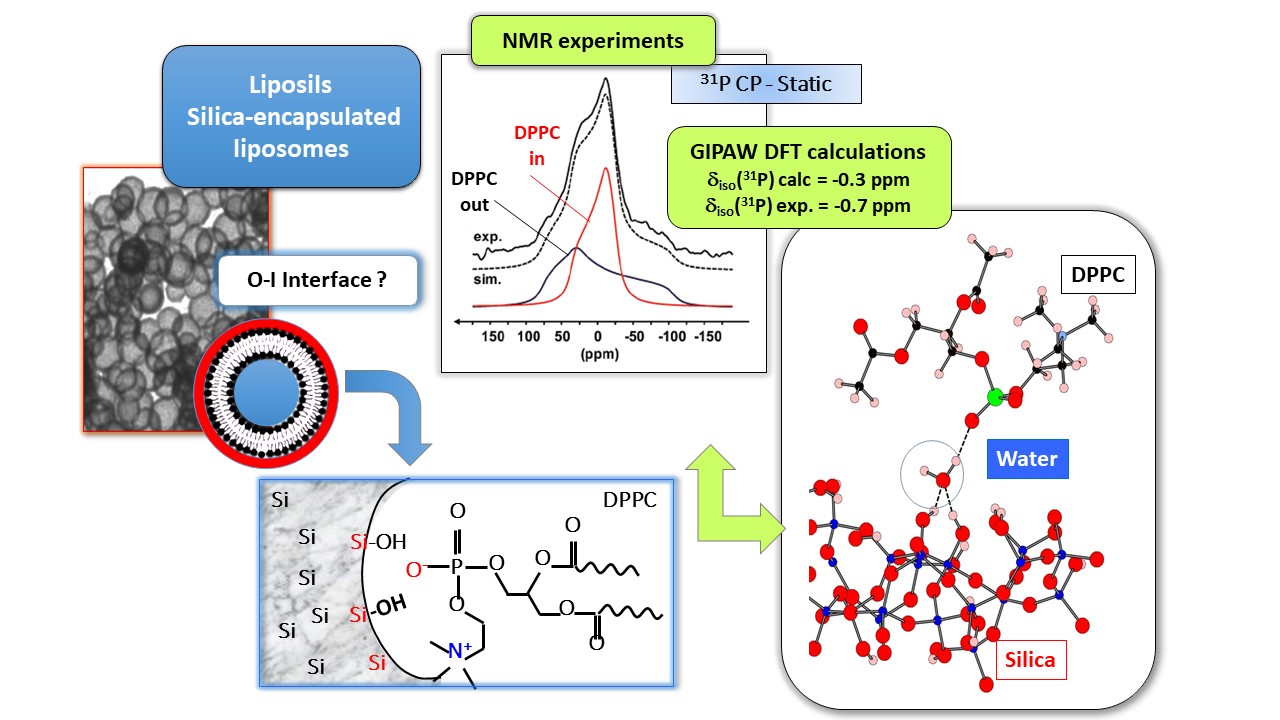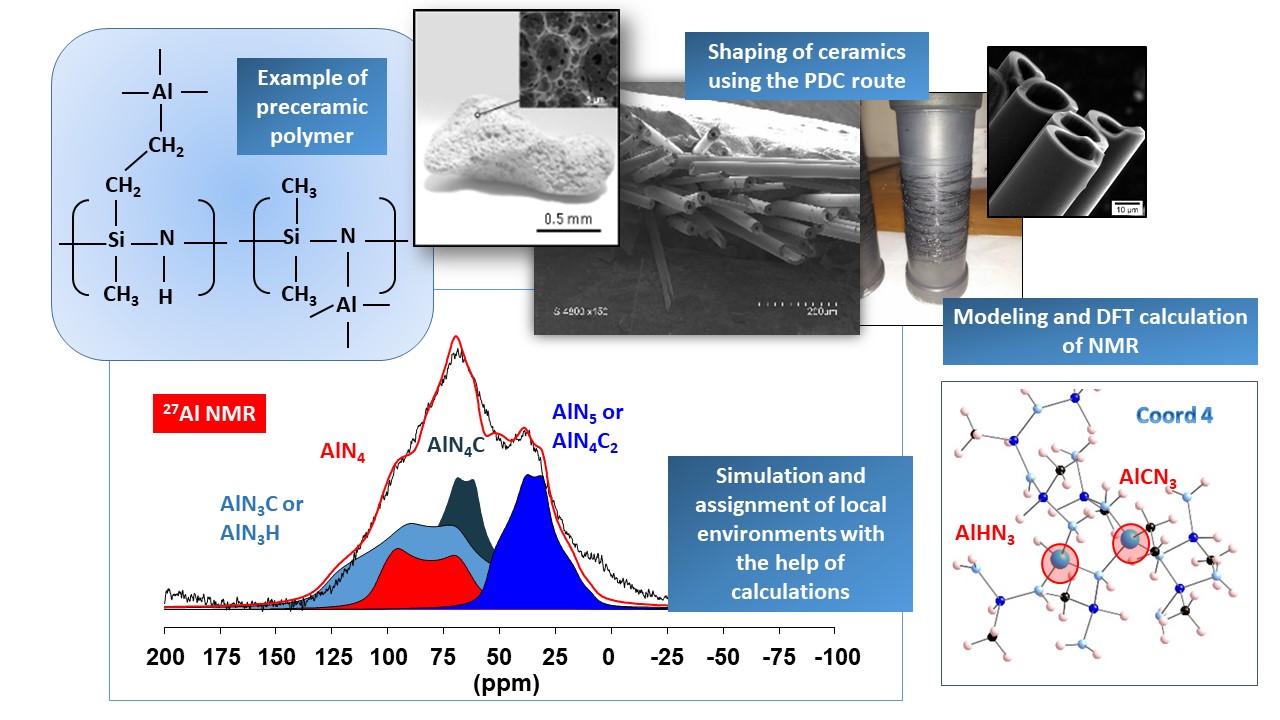
Laboratoire de chimie de la matière condensée de Paris
Tour 44-43 / 4ème étage
Case courrier 174
4, Place Jussieu
75005 PARIS
France
Christel GERVAIS
Professeur
SMiLES
christel.gervais_stary[at]upmc.fr@-Code a retirer pour éviter le SPAM-
Christel Gervais is a chemical engineer from the Ecole Nationale Supérieure de Chimie de Paris (ENSCP) and graduated in 1996. She defended her doctoral thesis in october 1999 in the University Pierre and Marie Curie (UPMC) now part of Sorbonne University. Her research project, performed under the supervision of Dr. F. Babonneau was focused on the characterization by solid state NMR of polymer derived ceramics (PDCs). Funded by a Marie Curie individual fellowship, she then joined the Physics Department of the University of Warwick (UK) to work on the synthesis and characterization by solid state NMR of TiO2 and mixed SiO2-TiO2 oxide nanoparticles prepared by sol-gel process, under the supervision of Pr M. E. Smith. She was hired in September 2000 at the Laboratoire de Chimie de la Matière Condensée de Paris (LCMCP) as assistant professor. In 2011, she was appointed full professor to develop a research project entitled « Spectroscopy and modeling for structural characterization of materials ».
Her research activities are centered on solid state NMR spectroscopy and deal with the characterization of a wide range of materials including nitride- or oxide-based ceramics prepared by polymeric routes, hybrid systems exhibiting an interface between an inorganic surface and (bio)organic molecules, biomaterials…. Moreover, for a few years, she combined this experimental approach with a more theoretical one based on ab-initio calculations of NMR parameters. Indeed, NMR spectra offer valuable structural information provided a careful analysis consisting for instance in assigning a chemical shift to a well defined structural site. Ab-initio calculations appear therefore a very useful tool to simulate experimental spectra and obtain data on model systems difficult to synthesize. In addition, since materials investigated by NMR are generally disordered or even amorphous, structures used as a starting point for NMR calculations can not be obtained via X-Ray diffraction : therefore she also extended her activities to ab-initio structural modeling.

These studies are centered on the precise characterization of a matrix surface sites ((silica, HDL, MOF…) in order to study the adsorption of organic and bio-organic molecules (amino acids, peptides, drugs, pollutants). High resolution solid state NMR is a very powerful tool to investigate surfaces, adsorbed/encapsulated molecules but also interactions between both components Experiments are combined to first principles calculations to select the most relevant models.
Journal of the American Chemical Society 133 16815 (2011), Journal of Physical Chemistry C 117, 4104 (2013), Microporous and Mesoporous Materials 166, 109 (2013), Progress in Nuclear Magnetic Resonance Spectroscopy 77, 1 (2014), Chemistry a European Journal 20, 15188 (2014), Chemistry of Materials 27, 1242 (2015) Langmuir, 32, 997 (2016) Chemistry a European Journal 22, 16531 (2016), Journal of Physical Chemistry C 121, 17339 (2017)

The Polymer Derived Ceramics (PDCs) route is based on the shaping then pyrolysis of preceramic polymers : it is an attractive means for the production of “near net shape” advanced ceramics with a large variety of organizations going from 0D to 3D such as particles and spheres, (nano)fiber or coatings for a large range of application fields. Multinuclear solid-state NMR allows a fine description of the polymer structure to better understand their rheological behavior for example their melt-spinnability. The objective is indeed to tailor the properties and processability of the systems.
Journal of Materials Chemistry 22, 17923 (2012) Journal of the American Ceramic Society, 97, 303 (2014) Advanced Materials 26, 6548 (2014) Journal of Physical Chemistry C 119, 2783 (2015) J. Mater. Chem. A 5, 720 (2017) Chemistry a European Journal. 23, 9076 (2017), Dalton Transactions 46, 13510 (2017), Chemistry a European Journal 23, 17103 (2017), Dalton Transaction 47, 14580 (2018) Journal of the European Ceramic Society 39, 183 (2019), Royal Society Open Science 6 190690 (2019), J. Mater. Chem. A 8, 8752 (2020)

Apatites are at the crossroads of many disciplines (medicine, chemistry, paleontology, archeology, mineralogy) at the national and international level. The main inorganic component of bones is an hydroxyapatite (Ca5(PO4)3OH) substituted by carbonates. Besides the presence of carbonate groups, a large variability in chemical composition is also observed in natural samples, related to the bio-apatite formation or its post-mortem transformation. Changes in chemical composition range from cationic substitutions (eg Sr2+, Mn2+, rare earths) affecting the site of calcium, to the incorporation of anions (F–, Cl–) in the structural channels, and include the incorporation of hydrogen (HPO42-) and silicates (SiO44-) in the phosphate sites. The objective of this project is therefore to improve our understanding of the mechanisms controlling the chemical and isotopic composition of apatite and go further than the empirical approach often used in the interpretation of spectroscopic observations using in particular modeling and calculation of NMR parameters.
Biomaterials vol 32, 1826-1837 (2011), American Mineralogist vol 98, 1066–1069 (2013), RSC Advances vol 4,14700-14707 (2014), Physics and Chemistry of Minerals vol 41, 347-359 (2014), Acta Biomaterialia vol 10, 3952-3958, Phys Chem Minerals vol 43, 615-626 (2016), Geochimica & Cosmochimica Acta vol 219, 57-73 (2017), American Mineralogist Vol 103,326-329, Palaeogeography, Palaeoclimatology, Palaeoecology vol 526, 80–95 (2019), Archaeometry Vol 61,1129-1143
